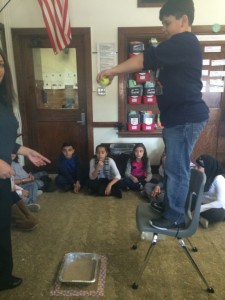Week of January 25-29
Kindergarten
Content Objective: I can demonstrate comprehension of position of objects at rest by listening to positional words and moving an object in the correct spot.
Language Objective: I can orally describe my objects position by using positional words.
My object is _________ the _____________.
Vocabulary: at rest, position, on, on top, in front of, behind, under, above, between, away from, closer to
P.FM.00.12 Describe the direction of a moving object(for example: away from, toward).
P.FM.00.11 Describe the position an object (for example: above, below, in front of, behind, on) in relation to other objects around it
First Grade
Content Objective: I can demonstrate comprehension of what happens during a thunderstorm by creating a model of a thunderstorm (using sponges to represent clouds absorbing water and when it can hold no more it will form precipitation :rain, snow, sleet).
Language Objective:
I can identify the sequence of a thunderstorm by putting pictures in the correct order and write to explain what is happening.
Sentence stems:
First _______________.
Then_______________. Next________________.
Finally__________________.
Vocabulary: observations, weather, clouds, atmosphere, water drops, rain, snow, sleet, precipitation, heavy, temperature, lightning, thunder
E.ES.01.23 Describe severe weather characteristics.
E.ES.01.21 Compare daily changes in weather related to temperature, cloud cover, precipitation(rain, snow, sleet, hail), wind.
Second Grade
Content Objective:
I can demonstrate comprehension of how water begins it journey as rain and ends its journey in the ocean by predicting and experimenting with drops of water on a slope( a slanted tray).
Language Objective: I can write to explain my observations with the water drop experiments.
Observations:
What did the water do when not on a slope?
What did the water drop do on a slope?
What happened when drops fell at different heights?
What happened when water drops ran into each other?
What did different size water drops do?
What would happen if the water drops were in frozen state?
Vocabulary: properties, water, liquid, solid, gas, water cycle, flowing, natural resource, ocean, lake, river, stream, describe, bead up, absorb
E.FE..02.13 Describe the properties of water as a liquid.
E.FE.E.1 Water is a natural resource and is found underground, on the surface of the Earth, and in the sky. It exists in three states (liquid, solid. gas) and can go back and forth from one to another.
Third Grade
Content Objective: I can demonstrate comprehension of how sound is created and travels by predicting and experimenting with sound traveling through gas(air), liquids, and solids to find out which one it travels best through.
Language Objective: I can write to explain how sound best travels using the sentence stems:
Sound can travel through _________, ______, and ________.
It travels best through ___________.
I know this because____________________.
Vocabulary: sound, sound waves, vibrations, back and forth motion, solid, liquid, gas, travels
P.EN.E.3 Sound- Vibrating objects produce sound. The pitch of sound varies by changing the rate of vibration.
Fourth Grade
Content Objective: I can demonstrate comprehension of physical and chemical changes in matter by predicting and experimenting with vinegar and various items(salt, sugar, baking powder, coffee grounds, kool-aid mix, lemon juice) to see if a chemical change occurred.
Language Objectives: I can write to explain the results I found using the sentence stem:
My results showed that_____________________.
The __________________ items created a chemical change. I know this because____________________.
Vocabulary: matter, changing states, chemical change, physical change, solid, liquid, gas, properties
P.CM.E.1 Changes in state- Matter can be changes from one state(liquid, solid, gas) to another and then back again
Fifth Grade
Content Objective: I can demonstrate comprehension of Solar and Lunar Eclipses by using a flashlight (sun), styro-foam white ball on a stick (moon) and small globe (Earth) to model what occurs during both eclipses.
Language Objective: I can write and draw to explain what happens during Solar and Lunar Eclipses.
Vocabulary: moon, earth, sun, orbit, revolve, rotate, Solar Eclipse, Lunar Eclipse, shadow
E.ST.05.24 Explain Lunar and Solar Eclipses
![IMG_2998[1]](https://iblog.dearbornschools.org/gruczl/wp-content/uploads/sites/1011/2016/01/IMG_29981-300x225.jpg)
![IMG_2997[1]](https://iblog.dearbornschools.org/gruczl/wp-content/uploads/sites/1011/2016/01/IMG_29971-300x225.jpg)
![IMG_2996[1]](https://iblog.dearbornschools.org/gruczl/wp-content/uploads/sites/1011/2016/01/IMG_29961-300x225.jpg)
![IMG_2995[1]](https://iblog.dearbornschools.org/gruczl/wp-content/uploads/sites/1011/2016/01/IMG_29951-300x225.jpg)
![IMG_3003[1]](https://iblog.dearbornschools.org/gruczl/wp-content/uploads/sites/1011/2016/01/IMG_30031-300x225.jpg)
![IMG_3002[1]](https://iblog.dearbornschools.org/gruczl/wp-content/uploads/sites/1011/2016/01/IMG_30021-300x225.jpg)
![IMG_3007[1]](https://iblog.dearbornschools.org/gruczl/wp-content/uploads/sites/1011/2016/01/IMG_30071-300x225.jpg)
![IMG_3006[1]](https://iblog.dearbornschools.org/gruczl/wp-content/uploads/sites/1011/2016/01/IMG_30061-300x225.jpg)
![IMG_3005[1]](https://iblog.dearbornschools.org/gruczl/wp-content/uploads/sites/1011/2016/01/IMG_30051-300x225.jpg)
![IMG_3004[1]](https://iblog.dearbornschools.org/gruczl/wp-content/uploads/sites/1011/2016/01/IMG_30041-300x225.jpg)
![IMG_2989[1]](https://iblog.dearbornschools.org/gruczl/wp-content/uploads/sites/1011/2016/01/IMG_29891-300x225.jpg)
![IMG_2988[1]](https://iblog.dearbornschools.org/gruczl/wp-content/uploads/sites/1011/2016/01/IMG_29881-300x225.jpg)
![IMG_2987[1]](https://iblog.dearbornschools.org/gruczl/wp-content/uploads/sites/1011/2016/01/IMG_29871-300x225.jpg)
![IMG_2986[1]](https://iblog.dearbornschools.org/gruczl/wp-content/uploads/sites/1011/2016/01/IMG_29861-300x225.jpg)
![IMG_2985[1]](https://iblog.dearbornschools.org/gruczl/wp-content/uploads/sites/1011/2016/01/IMG_29851-300x225.jpg)
![IMG_2984[1]](https://iblog.dearbornschools.org/gruczl/wp-content/uploads/sites/1011/2016/01/IMG_29841-300x225.jpg)
![IMG_2982[1]](https://iblog.dearbornschools.org/gruczl/wp-content/uploads/sites/1011/2016/01/IMG_29821-300x225.jpg)
![IMG_2981[1]](https://iblog.dearbornschools.org/gruczl/wp-content/uploads/sites/1011/2016/01/IMG_29811-300x225.jpg)
![IMG_2980[1]](https://iblog.dearbornschools.org/gruczl/wp-content/uploads/sites/1011/2016/01/IMG_29801-300x225.jpg)
![IMG_2979[1]](https://iblog.dearbornschools.org/gruczl/wp-content/uploads/sites/1011/2016/01/IMG_29791-300x225.jpg)
![IMG_2978[1]](https://iblog.dearbornschools.org/gruczl/wp-content/uploads/sites/1011/2016/01/IMG_29781-300x225.jpg)
![IMG_2976[1]](https://iblog.dearbornschools.org/gruczl/wp-content/uploads/sites/1011/2016/01/IMG_29761-300x225.jpg)
![IMG_2994[1]](https://iblog.dearbornschools.org/gruczl/wp-content/uploads/sites/1011/2016/01/IMG_29941-300x225.jpg)
![IMG_2993[1]](https://iblog.dearbornschools.org/gruczl/wp-content/uploads/sites/1011/2016/01/IMG_29931-300x225.jpg)
![IMG_2992[1]](https://iblog.dearbornschools.org/gruczl/wp-content/uploads/sites/1011/2016/01/IMG_29921-300x225.jpg)
![IMG_2990[1]](https://iblog.dearbornschools.org/gruczl/wp-content/uploads/sites/1011/2016/01/IMG_29901-300x225.jpg)
![IMG_2932[1]](https://iblog.dearbornschools.org/gruczl/wp-content/uploads/sites/1011/2016/01/IMG_29321-300x225.jpg)
![IMG_2930[1]](https://iblog.dearbornschools.org/gruczl/wp-content/uploads/sites/1011/2016/01/IMG_29301-300x225.jpg)
![IMG_2929[1]](https://iblog.dearbornschools.org/gruczl/wp-content/uploads/sites/1011/2016/01/IMG_29291-300x225.jpg)
![IMG_2955[1]](https://iblog.dearbornschools.org/gruczl/wp-content/uploads/sites/1011/2016/01/IMG_29551-300x225.jpg)
![IMG_2947[1]](https://iblog.dearbornschools.org/gruczl/wp-content/uploads/sites/1011/2016/01/IMG_29471-300x225.jpg)
![IMG_2946[1]](https://iblog.dearbornschools.org/gruczl/wp-content/uploads/sites/1011/2016/01/IMG_29461-300x225.jpg)
![IMG_2945[1]](https://iblog.dearbornschools.org/gruczl/wp-content/uploads/sites/1011/2016/01/IMG_29451-300x225.jpg)
![IMG_2954[1]](https://iblog.dearbornschools.org/gruczl/wp-content/uploads/sites/1011/2016/01/IMG_29541-300x225.jpg)
![IMG_2953[1]](https://iblog.dearbornschools.org/gruczl/wp-content/uploads/sites/1011/2016/01/IMG_29531-300x225.jpg)
![IMG_2952[1]](https://iblog.dearbornschools.org/gruczl/wp-content/uploads/sites/1011/2016/01/IMG_29521-300x225.jpg)
![IMG_2951[1]](https://iblog.dearbornschools.org/gruczl/wp-content/uploads/sites/1011/2016/01/IMG_29511-300x225.jpg)
![IMG_2950[1]](https://iblog.dearbornschools.org/gruczl/wp-content/uploads/sites/1011/2016/01/IMG_29501-300x225.jpg)
![IMG_2948[1]](https://iblog.dearbornschools.org/gruczl/wp-content/uploads/sites/1011/2016/01/IMG_29481-300x225.jpg)
![IMG_2927[1]](https://iblog.dearbornschools.org/gruczl/wp-content/uploads/sites/1011/2016/01/IMG_29271-300x225.jpg)
![IMG_2926[1]](https://iblog.dearbornschools.org/gruczl/wp-content/uploads/sites/1011/2016/01/IMG_29261-300x225.jpg)
![IMG_2925[1]](https://iblog.dearbornschools.org/gruczl/wp-content/uploads/sites/1011/2016/01/IMG_29251-300x225.jpg)
![IMG_2924[1]](https://iblog.dearbornschools.org/gruczl/wp-content/uploads/sites/1011/2016/01/IMG_29241-300x225.jpg)
![IMG_2923[1]](https://iblog.dearbornschools.org/gruczl/wp-content/uploads/sites/1011/2016/01/IMG_29231-300x225.jpg)
![IMG_2921[1]](https://iblog.dearbornschools.org/gruczl/wp-content/uploads/sites/1011/2016/01/IMG_29211-300x225.jpg)
![IMG_2920[1]](https://iblog.dearbornschools.org/gruczl/wp-content/uploads/sites/1011/2016/01/IMG_29201-300x225.jpg)
![IMG_2919[1]](https://iblog.dearbornschools.org/gruczl/wp-content/uploads/sites/1011/2016/01/IMG_29191-300x225.jpg)
![IMG_2918[1]](https://iblog.dearbornschools.org/gruczl/wp-content/uploads/sites/1011/2016/01/IMG_29181-300x225.jpg)
![IMG_2917[1]](https://iblog.dearbornschools.org/gruczl/wp-content/uploads/sites/1011/2016/01/IMG_29171-300x225.jpg)
![IMG_2916[1]](https://iblog.dearbornschools.org/gruczl/wp-content/uploads/sites/1011/2016/01/IMG_29161-300x225.jpg)
![IMG_2888[1]](https://iblog.dearbornschools.org/gruczl/wp-content/uploads/sites/1011/2016/01/IMG_28881-300x225.jpg)
![IMG_2887[1]](https://iblog.dearbornschools.org/gruczl/wp-content/uploads/sites/1011/2016/01/IMG_28871-300x225.jpg)
![IMG_2885[1]](https://iblog.dearbornschools.org/gruczl/wp-content/uploads/sites/1011/2016/01/IMG_28851-300x225.jpg)
![IMG_2883[1]](https://iblog.dearbornschools.org/gruczl/wp-content/uploads/sites/1011/2016/01/IMG_28831-300x225.jpg)
![IMG_2897[1]](https://iblog.dearbornschools.org/gruczl/wp-content/uploads/sites/1011/2016/01/IMG_28971-300x300.jpg)
![IMG_2896[1]](https://iblog.dearbornschools.org/gruczl/wp-content/uploads/sites/1011/2016/01/IMG_28961-300x225.jpg)
![IMG_2898[1]](https://iblog.dearbornschools.org/gruczl/wp-content/uploads/sites/1011/2016/01/IMG_28981-300x225.jpg)
![IMG_2899[1]](https://iblog.dearbornschools.org/gruczl/wp-content/uploads/sites/1011/2016/01/IMG_28991-300x225.jpg)
![IMG_2900[1]](https://iblog.dearbornschools.org/gruczl/wp-content/uploads/sites/1011/2016/01/IMG_29001-300x225.jpg)
![IMG_2902[1]](https://iblog.dearbornschools.org/gruczl/wp-content/uploads/sites/1011/2016/01/IMG_29021-300x225.jpg)
![IMG_2904[1]](https://iblog.dearbornschools.org/gruczl/wp-content/uploads/sites/1011/2016/01/IMG_29041-300x225.jpg)
![IMG_2892[1]](https://iblog.dearbornschools.org/gruczl/wp-content/uploads/sites/1011/2016/01/IMG_28921-300x225.jpg)
![IMG_2890[1]](https://iblog.dearbornschools.org/gruczl/wp-content/uploads/sites/1011/2016/01/IMG_28901-300x225.jpg)
![IMG_2889[1]](https://iblog.dearbornschools.org/gruczl/wp-content/uploads/sites/1011/2016/01/IMG_28891-300x225.jpg)
![IMG_2875[1]](https://iblog.dearbornschools.org/gruczl/wp-content/uploads/sites/1011/2016/01/IMG_28751-300x225.jpg)
![IMG_2873[1]](https://iblog.dearbornschools.org/gruczl/wp-content/uploads/sites/1011/2016/01/IMG_28731-300x225.jpg)
![IMG_2871[1]](https://iblog.dearbornschools.org/gruczl/wp-content/uploads/sites/1011/2016/01/IMG_28711-300x225.jpg)
![IMG_2870[1]](https://iblog.dearbornschools.org/gruczl/wp-content/uploads/sites/1011/2016/01/IMG_28701-300x225.jpg)
![IMG_2869[1]](https://iblog.dearbornschools.org/gruczl/wp-content/uploads/sites/1011/2016/01/IMG_28691-300x225.jpg)
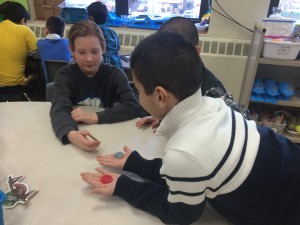
![IMG_2876[1]](https://iblog.dearbornschools.org/gruczl/wp-content/uploads/sites/1011/2016/01/IMG_28761-300x225.jpg)
![IMG_2877[1]](https://iblog.dearbornschools.org/gruczl/wp-content/uploads/sites/1011/2016/01/IMG_28771-300x225.jpg)
![IMG_2878[1]](https://iblog.dearbornschools.org/gruczl/wp-content/uploads/sites/1011/2016/01/IMG_28781-300x225.jpg)
![IMG_2879[1]](https://iblog.dearbornschools.org/gruczl/wp-content/uploads/sites/1011/2016/01/IMG_28791-300x225.jpg)
![IMG_2880[1]](https://iblog.dearbornschools.org/gruczl/wp-content/uploads/sites/1011/2016/01/IMG_28801-300x225.jpg)
![IMG_2881[1]](https://iblog.dearbornschools.org/gruczl/wp-content/uploads/sites/1011/2016/01/IMG_28811-300x225.jpg)
![IMG_2882[1]](https://iblog.dearbornschools.org/gruczl/wp-content/uploads/sites/1011/2016/01/IMG_28821-300x225.jpg)
![IMG_2818[1]](https://iblog.dearbornschools.org/gruczl/wp-content/uploads/sites/1011/2015/12/IMG_28181-300x225.jpg)
![IMG_2816[1]](https://iblog.dearbornschools.org/gruczl/wp-content/uploads/sites/1011/2015/12/IMG_28161-300x225.jpg)
![IMG_2815[1]](https://iblog.dearbornschools.org/gruczl/wp-content/uploads/sites/1011/2015/12/IMG_28151-300x225.jpg)
![IMG_2827[1]](https://iblog.dearbornschools.org/gruczl/wp-content/uploads/sites/1011/2015/12/IMG_28271-300x225.jpg)
![IMG_2829[1]](https://iblog.dearbornschools.org/gruczl/wp-content/uploads/sites/1011/2015/12/IMG_28291-300x225.jpg)
![IMG_2826[1]](https://iblog.dearbornschools.org/gruczl/wp-content/uploads/sites/1011/2015/12/IMG_28261-300x225.jpg)
![IMG_2824[1]](https://iblog.dearbornschools.org/gruczl/wp-content/uploads/sites/1011/2015/12/IMG_28241-300x225.jpg)
![IMG_2825[1]](https://iblog.dearbornschools.org/gruczl/wp-content/uploads/sites/1011/2015/12/IMG_28251-300x225.jpg)
![IMG_2834[1]](https://iblog.dearbornschools.org/gruczl/wp-content/uploads/sites/1011/2015/12/IMG_28341-300x225.jpg)
![IMG_2832[1]](https://iblog.dearbornschools.org/gruczl/wp-content/uploads/sites/1011/2015/12/IMG_28321-300x225.jpg)
![IMG_2831[1]](https://iblog.dearbornschools.org/gruczl/wp-content/uploads/sites/1011/2015/12/IMG_28311-300x225.jpg)
![IMG_2830[1]](https://iblog.dearbornschools.org/gruczl/wp-content/uploads/sites/1011/2015/12/IMG_28301-300x225.jpg)
![IMG_2811[1]](https://iblog.dearbornschools.org/gruczl/wp-content/uploads/sites/1011/2015/12/IMG_28111-300x225.jpg)
![IMG_2810[1]](https://iblog.dearbornschools.org/gruczl/wp-content/uploads/sites/1011/2015/12/IMG_28101-300x225.jpg)
![IMG_2808[1]](https://iblog.dearbornschools.org/gruczl/wp-content/uploads/sites/1011/2015/12/IMG_28081-300x225.jpg)
![IMG_2807[1]](https://iblog.dearbornschools.org/gruczl/wp-content/uploads/sites/1011/2015/12/IMG_28071-300x225.jpg)
![IMG_2805[1]](https://iblog.dearbornschools.org/gruczl/wp-content/uploads/sites/1011/2015/12/IMG_28051-300x225.jpg)
![IMG_2803[1]](https://iblog.dearbornschools.org/gruczl/wp-content/uploads/sites/1011/2015/12/IMG_28031-300x225.jpg)
![IMG_2802[1]](https://iblog.dearbornschools.org/gruczl/wp-content/uploads/sites/1011/2015/12/IMG_28021-300x225.jpg)
![IMG_2800[1]](https://iblog.dearbornschools.org/gruczl/wp-content/uploads/sites/1011/2015/12/IMG_28001-300x225.jpg)
![IMG_2797[1]](https://iblog.dearbornschools.org/gruczl/wp-content/uploads/sites/1011/2015/12/IMG_27971-300x225.jpg)
![IMG_2796[1]](https://iblog.dearbornschools.org/gruczl/wp-content/uploads/sites/1011/2015/12/IMG_27961-300x225.jpg)
![IMG_2795[1]](https://iblog.dearbornschools.org/gruczl/wp-content/uploads/sites/1011/2015/12/IMG_27951-300x225.jpg)
![IMG_2793[1]](https://iblog.dearbornschools.org/gruczl/wp-content/uploads/sites/1011/2015/12/IMG_27931-300x225.jpg)
![IMG_2792[1]](https://iblog.dearbornschools.org/gruczl/wp-content/uploads/sites/1011/2015/12/IMG_27921-300x225.jpg)
![IMG_2814[1]](https://iblog.dearbornschools.org/gruczl/wp-content/uploads/sites/1011/2015/12/IMG_28141-300x225.jpg)
![IMG_2813[1]](https://iblog.dearbornschools.org/gruczl/wp-content/uploads/sites/1011/2015/12/IMG_28131-300x225.jpg)
![IMG_2812[1]](https://iblog.dearbornschools.org/gruczl/wp-content/uploads/sites/1011/2015/12/IMG_28121-300x225.jpg)
![IMG_2747[1]](https://iblog.dearbornschools.org/gruczl/wp-content/uploads/sites/1011/2015/12/IMG_27471-300x225.jpg)
![IMG_2745[1]](https://iblog.dearbornschools.org/gruczl/wp-content/uploads/sites/1011/2015/12/IMG_27451-300x225.jpg)
![IMG_2721[1]](https://iblog.dearbornschools.org/gruczl/wp-content/uploads/sites/1011/2015/12/IMG_27211-300x225.jpg)
![IMG_2720[1]](https://iblog.dearbornschools.org/gruczl/wp-content/uploads/sites/1011/2015/12/IMG_27201-300x225.jpg)
![IMG_2746[1]](https://iblog.dearbornschools.org/gruczl/wp-content/uploads/sites/1011/2015/12/IMG_27461-300x225.jpg)
![IMG_2741[1]](https://iblog.dearbornschools.org/gruczl/wp-content/uploads/sites/1011/2015/12/IMG_27411-300x225.jpg)
![IMG_2737[1]](https://iblog.dearbornschools.org/gruczl/wp-content/uploads/sites/1011/2015/12/IMG_27371-300x225.jpg)
![IMG_2739[1]](https://iblog.dearbornschools.org/gruczl/wp-content/uploads/sites/1011/2015/12/IMG_27391-300x225.jpg)
![IMG_2742[1]](https://iblog.dearbornschools.org/gruczl/wp-content/uploads/sites/1011/2015/12/IMG_27421-300x225.jpg)
![IMG_2743[1]](https://iblog.dearbornschools.org/gruczl/wp-content/uploads/sites/1011/2015/12/IMG_27431-300x225.jpg)
![IMG_2727[1]](https://iblog.dearbornschools.org/gruczl/wp-content/uploads/sites/1011/2015/12/IMG_27271-300x225.jpg)
![IMG_2716[1]](https://iblog.dearbornschools.org/gruczl/wp-content/uploads/sites/1011/2015/12/IMG_27161-300x225.jpg)
![IMG_2708[1]](https://iblog.dearbornschools.org/gruczl/wp-content/uploads/sites/1011/2015/12/IMG_27081-300x225.jpg)
![IMG_2711[1]](https://iblog.dearbornschools.org/gruczl/wp-content/uploads/sites/1011/2015/12/IMG_27111-300x225.jpg)
![IMG_2734[1]](https://iblog.dearbornschools.org/gruczl/wp-content/uploads/sites/1011/2015/12/IMG_27341-300x225.jpg)
![IMG_2733[1]](https://iblog.dearbornschools.org/gruczl/wp-content/uploads/sites/1011/2015/12/IMG_27331-300x225.jpg)
![IMG_2654[1]](https://iblog.dearbornschools.org/gruczl/wp-content/uploads/sites/1011/2015/11/IMG_26541-300x225.jpg)
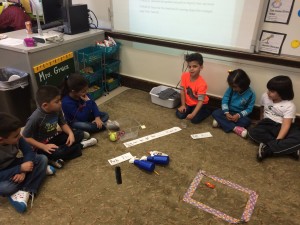
![IMG_2659[1]](https://iblog.dearbornschools.org/gruczl/wp-content/uploads/sites/1011/2015/11/IMG_26591-300x225.jpg)
![IMG_2663[1]](https://iblog.dearbornschools.org/gruczl/wp-content/uploads/sites/1011/2015/11/IMG_26631-300x225.jpg)
![IMG_2661[1]](https://iblog.dearbornschools.org/gruczl/wp-content/uploads/sites/1011/2015/11/IMG_26611-300x225.jpg)
![IMG_2660[1]](https://iblog.dearbornschools.org/gruczl/wp-content/uploads/sites/1011/2015/11/IMG_26601-300x225.jpg)
![IMG_2671[1]](https://iblog.dearbornschools.org/gruczl/wp-content/uploads/sites/1011/2015/11/IMG_26711-300x225.jpg)
![IMG_2669[1]](https://iblog.dearbornschools.org/gruczl/wp-content/uploads/sites/1011/2015/11/IMG_26691-300x225.jpg)
![IMG_2668[1]](https://iblog.dearbornschools.org/gruczl/wp-content/uploads/sites/1011/2015/11/IMG_26681-300x225.jpg)
![IMG_2667[1]](https://iblog.dearbornschools.org/gruczl/wp-content/uploads/sites/1011/2015/11/IMG_26671-300x225.jpg)
![IMG_2666[1]](https://iblog.dearbornschools.org/gruczl/wp-content/uploads/sites/1011/2015/11/IMG_26661-300x225.jpg)
![IMG_2665[1]](https://iblog.dearbornschools.org/gruczl/wp-content/uploads/sites/1011/2015/11/IMG_26651-300x225.jpg)
![IMG_2643[1]](https://iblog.dearbornschools.org/gruczl/wp-content/uploads/sites/1011/2015/11/IMG_26431-300x225.jpg)
![IMG_2644[1]](https://iblog.dearbornschools.org/gruczl/wp-content/uploads/sites/1011/2015/11/IMG_26441-300x225.jpg)
![IMG_2641[1]](https://iblog.dearbornschools.org/gruczl/wp-content/uploads/sites/1011/2015/11/IMG_26411-300x225.jpg)
![IMG_2640[1]](https://iblog.dearbornschools.org/gruczl/wp-content/uploads/sites/1011/2015/11/IMG_26401-300x225.jpg)
![IMG_2652[1]](https://iblog.dearbornschools.org/gruczl/wp-content/uploads/sites/1011/2015/11/IMG_26521-300x225.jpg)
![IMG_2651[1]](https://iblog.dearbornschools.org/gruczl/wp-content/uploads/sites/1011/2015/11/IMG_26511-300x225.jpg)
![IMG_2658[1]](https://iblog.dearbornschools.org/gruczl/wp-content/uploads/sites/1011/2015/11/IMG_26581-300x225.jpg)
![IMG_2573[1]](https://iblog.dearbornschools.org/gruczl/wp-content/uploads/sites/1011/2015/11/IMG_25731-300x225.jpg)
![IMG_2571[1]](https://iblog.dearbornschools.org/gruczl/wp-content/uploads/sites/1011/2015/11/IMG_25711-300x225.jpg)
![IMG_2569[1]](https://iblog.dearbornschools.org/gruczl/wp-content/uploads/sites/1011/2015/11/IMG_25691-300x225.jpg)
![IMG_2577[1]](https://iblog.dearbornschools.org/gruczl/wp-content/uploads/sites/1011/2015/11/IMG_25771-300x225.jpg)
![IMG_2574[1]](https://iblog.dearbornschools.org/gruczl/wp-content/uploads/sites/1011/2015/11/IMG_25741-300x225.jpg)
![IMG_2629[1]](https://iblog.dearbornschools.org/gruczl/wp-content/uploads/sites/1011/2015/11/IMG_26291-300x225.jpg)
![IMG_2628[1]](https://iblog.dearbornschools.org/gruczl/wp-content/uploads/sites/1011/2015/11/IMG_26281-300x225.jpg)
![IMG_2626[1]](https://iblog.dearbornschools.org/gruczl/wp-content/uploads/sites/1011/2015/11/IMG_26261-300x225.jpg)
![IMG_2632[1]](https://iblog.dearbornschools.org/gruczl/wp-content/uploads/sites/1011/2015/11/IMG_26321-300x225.jpg)
![IMG_2631[1]](https://iblog.dearbornschools.org/gruczl/wp-content/uploads/sites/1011/2015/11/IMG_26311-300x225.jpg)
![IMG_2557[1]](https://iblog.dearbornschools.org/gruczl/wp-content/uploads/sites/1011/2015/11/IMG_25571-300x225.jpg)
![IMG_2560[1]](https://iblog.dearbornschools.org/gruczl/wp-content/uploads/sites/1011/2015/11/IMG_25601-300x225.jpg)
![IMG_2550[1]](https://iblog.dearbornschools.org/gruczl/wp-content/uploads/sites/1011/2015/11/IMG_25501-300x225.jpg)
![IMG_2553[1]](https://iblog.dearbornschools.org/gruczl/wp-content/uploads/sites/1011/2015/11/IMG_25531-300x225.jpg)
![IMG_2554[1]](https://iblog.dearbornschools.org/gruczl/wp-content/uploads/sites/1011/2015/11/IMG_25541-300x225.jpg)
![IMG_2556[1]](https://iblog.dearbornschools.org/gruczl/wp-content/uploads/sites/1011/2015/11/IMG_25561-300x225.jpg)
![IMG_2580[1]](https://iblog.dearbornschools.org/gruczl/wp-content/uploads/sites/1011/2015/11/IMG_25801-300x225.jpg)
![IMG_2581[1]](https://iblog.dearbornschools.org/gruczl/wp-content/uploads/sites/1011/2015/11/IMG_25811-300x225.jpg)
![IMG_2544[1]](https://iblog.dearbornschools.org/gruczl/wp-content/uploads/sites/1011/2015/11/IMG_25441-300x225.jpg)
![IMG_2545[1]](https://iblog.dearbornschools.org/gruczl/wp-content/uploads/sites/1011/2015/11/IMG_25451-300x225.jpg)
![IMG_2546[1]](https://iblog.dearbornschools.org/gruczl/wp-content/uploads/sites/1011/2015/11/IMG_25461-300x225.jpg)
![IMG_2548[1]](https://iblog.dearbornschools.org/gruczl/wp-content/uploads/sites/1011/2015/11/IMG_25481-300x225.jpg)
![IMG_2619[1]](https://iblog.dearbornschools.org/gruczl/wp-content/uploads/sites/1011/2015/11/IMG_26191-300x225.jpg)
![IMG_2613[1]](https://iblog.dearbornschools.org/gruczl/wp-content/uploads/sites/1011/2015/11/IMG_26131-300x225.jpg)
![IMG_2566[1]](https://iblog.dearbornschools.org/gruczl/wp-content/uploads/sites/1011/2015/11/IMG_25661-300x225.jpg)
![IMG_2565[1]](https://iblog.dearbornschools.org/gruczl/wp-content/uploads/sites/1011/2015/11/IMG_25651-300x225.jpg)
![IMG_2567[1]](https://iblog.dearbornschools.org/gruczl/wp-content/uploads/sites/1011/2015/11/IMG_25671-300x225.jpg)
![IMG_2515[1]](https://iblog.dearbornschools.org/gruczl/wp-content/uploads/sites/1011/2015/11/IMG_25151-300x225.jpg)
![IMG_2516[1]](https://iblog.dearbornschools.org/gruczl/wp-content/uploads/sites/1011/2015/11/IMG_25161-300x225.jpg)
![IMG_2517[1]](https://iblog.dearbornschools.org/gruczl/wp-content/uploads/sites/1011/2015/11/IMG_25171-300x225.jpg)
![IMG_2518[1]](https://iblog.dearbornschools.org/gruczl/wp-content/uploads/sites/1011/2015/11/IMG_25181-300x225.jpg)
![IMG_2523[1]](https://iblog.dearbornschools.org/gruczl/wp-content/uploads/sites/1011/2015/11/IMG_25231-300x225.jpg)
![IMG_2524[1]](https://iblog.dearbornschools.org/gruczl/wp-content/uploads/sites/1011/2015/11/IMG_25241-300x225.jpg)
![IMG_2525[1]](https://iblog.dearbornschools.org/gruczl/wp-content/uploads/sites/1011/2015/11/IMG_25251-300x225.jpg)
![IMG_2527[1]](https://iblog.dearbornschools.org/gruczl/wp-content/uploads/sites/1011/2015/11/IMG_25271-300x225.jpg)
![IMG_2530[1]](https://iblog.dearbornschools.org/gruczl/wp-content/uploads/sites/1011/2015/11/IMG_25301-300x225.jpg)
![IMG_2529[1]](https://iblog.dearbornschools.org/gruczl/wp-content/uploads/sites/1011/2015/11/IMG_25291-300x300.jpg)
![IMG_2528[1]](https://iblog.dearbornschools.org/gruczl/wp-content/uploads/sites/1011/2015/11/IMG_25281-300x300.jpg)
![IMG_2492[1]](https://iblog.dearbornschools.org/gruczl/wp-content/uploads/sites/1011/2015/11/IMG_24921-300x225.jpg)
![IMG_2498[1]](https://iblog.dearbornschools.org/gruczl/wp-content/uploads/sites/1011/2015/11/IMG_24981-300x225.jpg)
![IMG_2495[1]](https://iblog.dearbornschools.org/gruczl/wp-content/uploads/sites/1011/2015/11/IMG_24951-300x225.jpg)
![IMG_2494[1]](https://iblog.dearbornschools.org/gruczl/wp-content/uploads/sites/1011/2015/11/IMG_24941-300x225.jpg)
![IMG_2490[1]](https://iblog.dearbornschools.org/gruczl/wp-content/uploads/sites/1011/2015/11/IMG_24901-300x225.jpg)
![IMG_2489[1]](https://iblog.dearbornschools.org/gruczl/wp-content/uploads/sites/1011/2015/11/IMG_24891-300x225.jpg)
![IMG_2488[1]](https://iblog.dearbornschools.org/gruczl/wp-content/uploads/sites/1011/2015/11/IMG_24881-300x225.jpg)
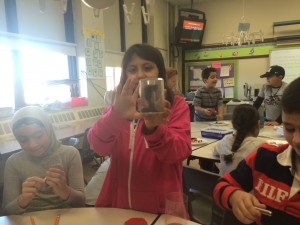
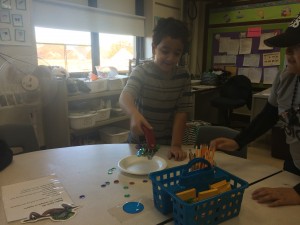
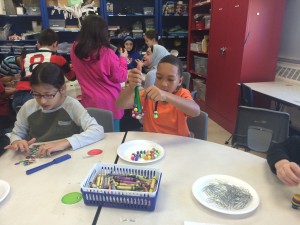
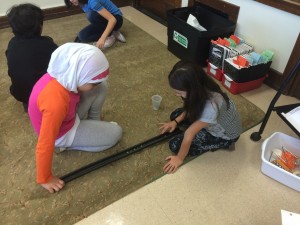
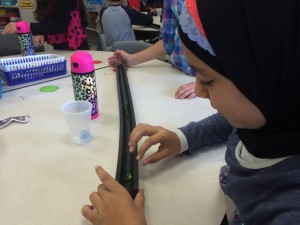
![IMG_2509[1]](https://iblog.dearbornschools.org/gruczl/wp-content/uploads/sites/1011/2015/11/IMG_25091-300x225.jpg)
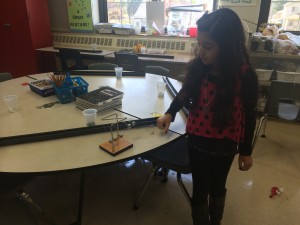
![IMG_2499[1]](https://iblog.dearbornschools.org/gruczl/wp-content/uploads/sites/1011/2015/11/IMG_24991-300x225.jpg)
![IMG_2416[1]](https://iblog.dearbornschools.org/gruczl/wp-content/uploads/sites/1011/2015/10/IMG_24161-300x225.jpg)
![IMG_2418[1]](https://iblog.dearbornschools.org/gruczl/wp-content/uploads/sites/1011/2015/10/IMG_24181-300x225.jpg)
![IMG_2415[1]](https://iblog.dearbornschools.org/gruczl/wp-content/uploads/sites/1011/2015/10/IMG_24151-300x225.jpg)
![IMG_2413[1]](https://iblog.dearbornschools.org/gruczl/wp-content/uploads/sites/1011/2015/10/IMG_241311-300x225.jpg)
![IMG_2431[1]](https://iblog.dearbornschools.org/gruczl/wp-content/uploads/sites/1011/2015/10/IMG_24311-300x225.jpg)
![IMG_2430[1]](https://iblog.dearbornschools.org/gruczl/wp-content/uploads/sites/1011/2015/10/IMG_24301-300x225.jpg)
![IMG_2427[1]](https://iblog.dearbornschools.org/gruczl/wp-content/uploads/sites/1011/2015/10/IMG_24271-300x225.jpg)
![IMG_2424[1]](https://iblog.dearbornschools.org/gruczl/wp-content/uploads/sites/1011/2015/10/IMG_24241-300x225.jpg)
![IMG_2443[1]](https://iblog.dearbornschools.org/gruczl/wp-content/uploads/sites/1011/2015/10/IMG_24431-300x225.jpg)
![IMG_2440[1]](https://iblog.dearbornschools.org/gruczl/wp-content/uploads/sites/1011/2015/10/IMG_24401-300x225.jpg)
![IMG_2438[1]](https://iblog.dearbornschools.org/gruczl/wp-content/uploads/sites/1011/2015/10/IMG_24381-300x225.jpg)
![IMG_2437[1]](https://iblog.dearbornschools.org/gruczl/wp-content/uploads/sites/1011/2015/10/IMG_24371-300x225.jpg)
![IMG_2436[1]](https://iblog.dearbornschools.org/gruczl/wp-content/uploads/sites/1011/2015/10/IMG_24361-300x225.jpg)
![IMG_2434[1]](https://iblog.dearbornschools.org/gruczl/wp-content/uploads/sites/1011/2015/10/IMG_24341-300x225.jpg)
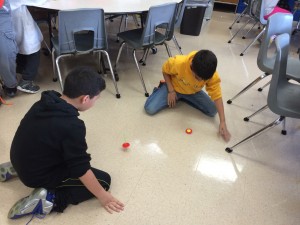

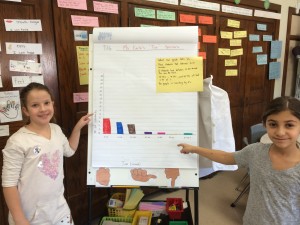
![IMG_2410[1]](https://iblog.dearbornschools.org/gruczl/wp-content/uploads/sites/1011/2015/10/IMG_24101-300x225.jpg)
![IMG_2328[1]](https://iblog.dearbornschools.org/gruczl/wp-content/uploads/sites/1011/2015/10/IMG_232811-300x225.jpg)
![IMG_2325[1]](https://iblog.dearbornschools.org/gruczl/wp-content/uploads/sites/1011/2015/10/IMG_232511-300x225.jpg)
![IMG_2423[1]](https://iblog.dearbornschools.org/gruczl/wp-content/uploads/sites/1011/2015/10/IMG_24231-300x225.jpg)
![IMG_2341[1]](https://iblog.dearbornschools.org/gruczl/wp-content/uploads/sites/1011/2015/10/IMG_23411-300x225.jpg)
![IMG_2340[1]](https://iblog.dearbornschools.org/gruczl/wp-content/uploads/sites/1011/2015/10/IMG_23401-300x225.jpg)
![IMG_2339[1]](https://iblog.dearbornschools.org/gruczl/wp-content/uploads/sites/1011/2015/10/IMG_23391-300x225.jpg)
![IMG_2338[1]](https://iblog.dearbornschools.org/gruczl/wp-content/uploads/sites/1011/2015/10/IMG_23381-300x225.jpg)
![IMG_2358[1]](https://iblog.dearbornschools.org/gruczl/wp-content/uploads/sites/1011/2015/10/IMG_23581-300x225.jpg)
![IMG_2357[1]](https://iblog.dearbornschools.org/gruczl/wp-content/uploads/sites/1011/2015/10/IMG_23571-300x225.jpg)
![IMG_2356[1]](https://iblog.dearbornschools.org/gruczl/wp-content/uploads/sites/1011/2015/10/IMG_23561-300x225.jpg)
![IMG_2355[1]](https://iblog.dearbornschools.org/gruczl/wp-content/uploads/sites/1011/2015/10/IMG_23551-300x225.jpg)
![IMG_2353[1]](https://iblog.dearbornschools.org/gruczl/wp-content/uploads/sites/1011/2015/10/IMG_23531-300x225.jpg)
![IMG_2351[1]](https://iblog.dearbornschools.org/gruczl/wp-content/uploads/sites/1011/2015/10/IMG_23511-300x225.jpg)
![IMG_2350[1]](https://iblog.dearbornschools.org/gruczl/wp-content/uploads/sites/1011/2015/10/IMG_23501-300x225.jpg)
![IMG_2347[1]](https://iblog.dearbornschools.org/gruczl/wp-content/uploads/sites/1011/2015/10/IMG_23471-300x225.jpg)
![IMG_2346[1]](https://iblog.dearbornschools.org/gruczl/wp-content/uploads/sites/1011/2015/10/IMG_23461-300x225.jpg)
![IMG_2344[1]](https://iblog.dearbornschools.org/gruczl/wp-content/uploads/sites/1011/2015/10/IMG_23441-300x225.jpg)
![IMG_2319[1]](https://iblog.dearbornschools.org/gruczl/wp-content/uploads/sites/1011/2015/10/IMG_23191-300x225.jpg)
![IMG_2318[1]](https://iblog.dearbornschools.org/gruczl/wp-content/uploads/sites/1011/2015/10/IMG_23181-300x225.jpg)
![IMG_2317[1]](https://iblog.dearbornschools.org/gruczl/wp-content/uploads/sites/1011/2015/10/IMG_23171-300x225.jpg)
![IMG_2314[1]](https://iblog.dearbornschools.org/gruczl/wp-content/uploads/sites/1011/2015/10/IMG_23141-300x225.jpg)
![IMG_2311[1]](https://iblog.dearbornschools.org/gruczl/wp-content/uploads/sites/1011/2015/10/IMG_23111-300x225.jpg)
![IMG_2310[1]](https://iblog.dearbornschools.org/gruczl/wp-content/uploads/sites/1011/2015/10/IMG_23101-300x225.jpg)
![IMG_2308[1]](https://iblog.dearbornschools.org/gruczl/wp-content/uploads/sites/1011/2015/10/IMG_23081-300x225.jpg)
![IMG_2307[1]](https://iblog.dearbornschools.org/gruczl/wp-content/uploads/sites/1011/2015/10/IMG_23071-300x225.jpg)
![IMG_2305[1]](https://iblog.dearbornschools.org/gruczl/wp-content/uploads/sites/1011/2015/10/IMG_23051-300x225.jpg)
![IMG_2303[1]](https://iblog.dearbornschools.org/gruczl/wp-content/uploads/sites/1011/2015/10/IMG_23031-300x225.jpg)
![IMG_2302[1]](https://iblog.dearbornschools.org/gruczl/wp-content/uploads/sites/1011/2015/10/IMG_23021-300x225.jpg)
![IMG_2299[1]](https://iblog.dearbornschools.org/gruczl/wp-content/uploads/sites/1011/2015/10/IMG_22991-300x225.jpg)
![IMG_2298[1]](https://iblog.dearbornschools.org/gruczl/wp-content/uploads/sites/1011/2015/10/IMG_22981-300x225.jpg)
![IMG_2291[1]](https://iblog.dearbornschools.org/gruczl/wp-content/uploads/sites/1011/2015/10/IMG_22911-300x225.jpg)
![IMG_2285[1]](https://iblog.dearbornschools.org/gruczl/wp-content/uploads/sites/1011/2015/10/IMG_22851-300x225.jpg)
![IMG_2331[1]](https://iblog.dearbornschools.org/gruczl/wp-content/uploads/sites/1011/2015/10/IMG_23311-300x225.jpg)
![IMG_2330[1]](https://iblog.dearbornschools.org/gruczl/wp-content/uploads/sites/1011/2015/10/IMG_23301-300x225.jpg)
![IMG_2329[1]](https://iblog.dearbornschools.org/gruczl/wp-content/uploads/sites/1011/2015/10/IMG_23291-300x225.jpg)
![IMG_2328[1]](https://iblog.dearbornschools.org/gruczl/wp-content/uploads/sites/1011/2015/10/IMG_23281-300x225.jpg)
![IMG_2326[1]](https://iblog.dearbornschools.org/gruczl/wp-content/uploads/sites/1011/2015/10/IMG_23261-300x225.jpg)
![IMG_2325[1]](https://iblog.dearbornschools.org/gruczl/wp-content/uploads/sites/1011/2015/10/IMG_23251-300x225.jpg)

